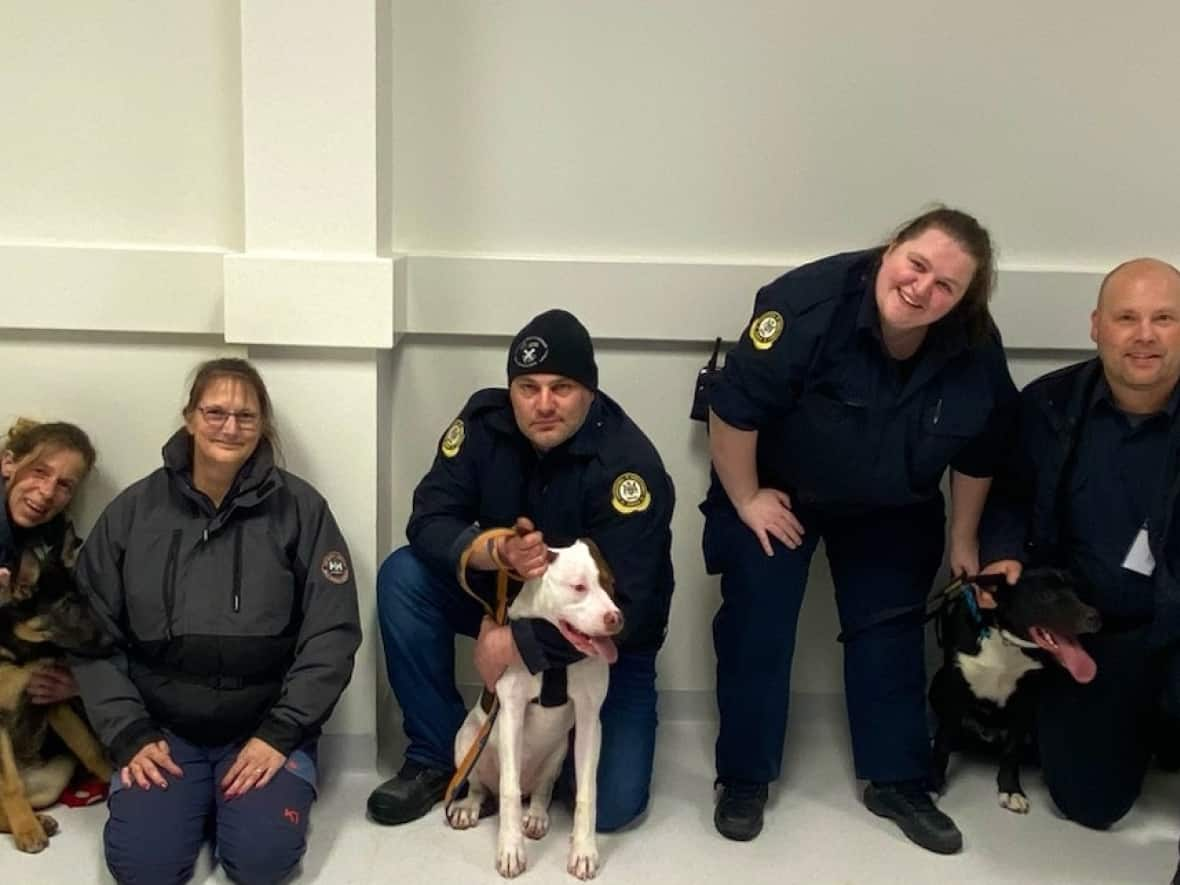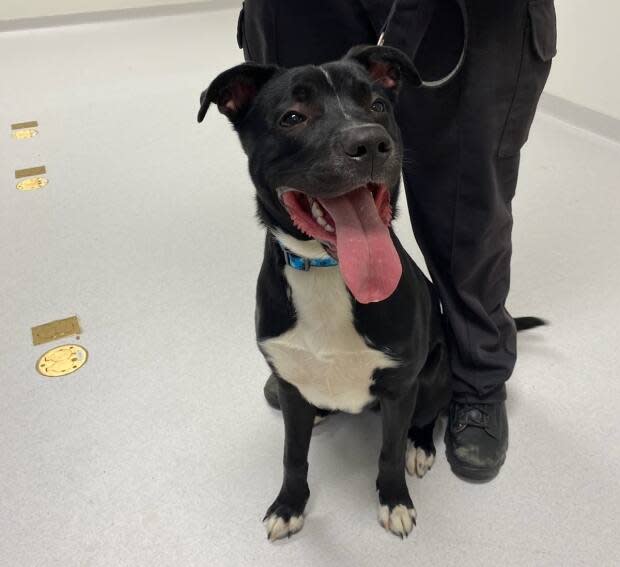How inmates in a new program at the Thunder Bay Correctional Centre are making special canine connections

A new program at the Thunder Bay Correctional Centre aims to help inmates reduce feelings of loneliness and frustration by teaching them a new skill — dog training.
Canine Connections, which was recently launched at the facility in northwestern Ontario, currently involves four inmates working with the animals, some of them rescue dogs, once a week.
It's the first program of its type in Ontario, said certified dog trainer Robin Ratz, who's overseeing it.
"This is a fascinating area that has started to be explored in Canada, but not yet in the province of Ontario," Ratz said. "We know that animals provide unconditional love and acceptance as well as spontaneous affection, and these behaviours in animals can be used as a teaching tool.
"They're [the inmates] learning something," she said. "They've had to earn this first of all, and now they're taking the time and they're learning how to teach a dog something new.... The dogs are benefiting from the program because they're getting trained."
Canine Connections runs in six-week blocks following the first session earlier in March. Participants are pre-screened, and volunteers bring in the dogs for sessions held once a week.
It starts with an orientation session with Ratz, who teaches the basics of handling dogs and how to build trusting relationships with them.

"First we try not to give them stress at all, but if a dog is getting stressed, we make sure that those signs and symptoms are very clear to us and then we destress the dog."
Ratz said all the training is built around positive reinforcement and uses the LIMA (Least Intrusive, Minimally Aversive) approach.
"All four of them are extremely kind to the animals. They did an amazing job Week 1. I couldn't be prouder. And there's not an animal out there that can't benefit from extra training associated with novel environments and people in a more positive way."
Shawn Bradshaw is a corrections officer at the centre and president of Ontario Public Service Employees Union (OPSEU) Local 708, which represents workers at the facility.
Bradshaw said the inmates are enjoying their time with the dogs.
"They're having fun with it. They saw the benefit. It was really a unique opportunity."
He said the plan is to run a second program once the first six weeks are over, and he hopes it can be expanded to include more dogs and inmates.
"Once the snow goes, we do have large fenced yard areas, so hopefully we can maybe involve a couple more dogs," Bradshaw said. "We have to see where it goes, and if we have the right inmates and the availability of the proper supports.
"I think we're going to see this expand through the summer and into the fall."
Bradshaw said the program will be beneficial to participants as it offers a sense of accomplishment and a morale boost.
"At the end of the day, positive activities occupy the inmates and it's a great incentive for them to control their institutional behaviour," Bradshaw said. "Where they were working with the dogs, other inmates who weren't part of the program were able to watch and see, and you can see some of them wanting to really get involved. No harm comes from positive activities."
Ratz said she would like to see this type of program expand to other Ontario correctional institutions, as well.
"I'm actually hoping that, eventually [the dogs] could start living with the inmates and so it could assist with our lack of fosters we have right now.
"All rescues are completely full," Ratz said. "There are animals are staying in care longer. And so if you have inmates that I'm working with training and living with them, that means that dogs are being trained more and more, working with people working in novel environments, and I think that would benefit everybody. I just think it would be an amazing second step."


